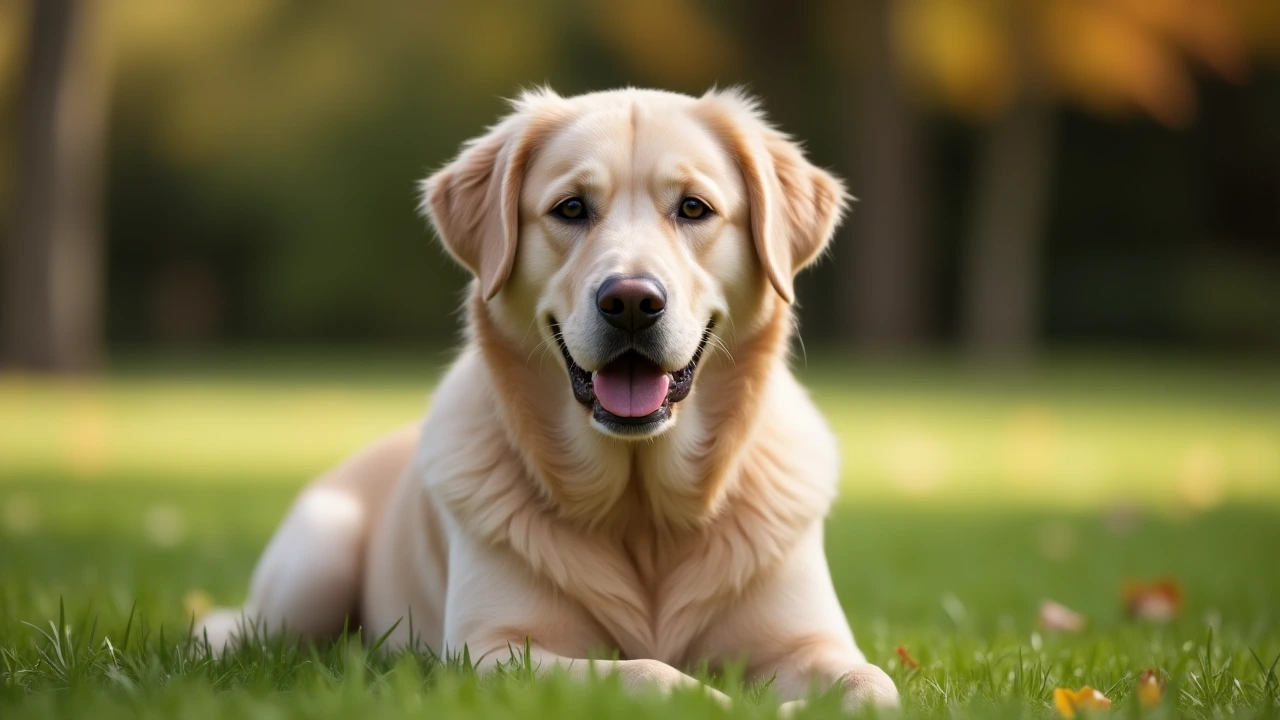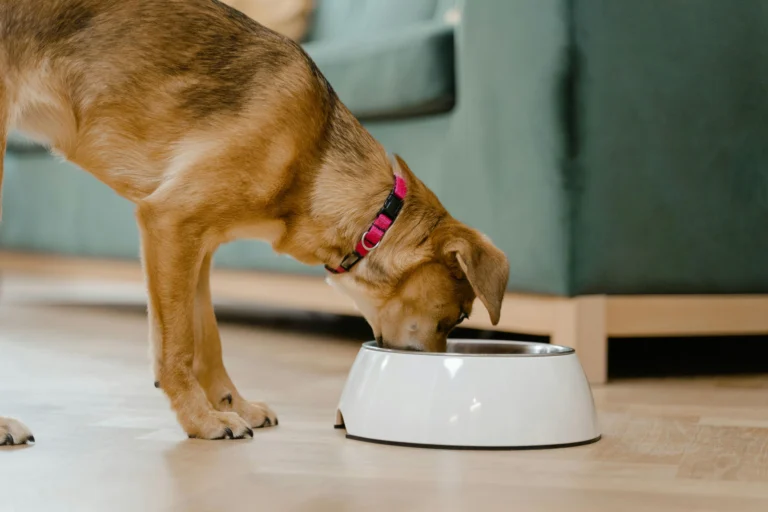Senior Dog Potty Training Problems: 8 Age-Related Solutions That Work
Introduction:
If you’re dealing with senior dog potty training problems, you’re not alone in this challenging journey. As our beloved canine companions age, their bathroom habits often change dramatically, leaving many pet owners feeling frustrated and concerned. Understanding that senior dog potty training problems stem from age-related physical and cognitive changes is the first step toward finding effective solutions that restore harmony to your home.
Whether your aging dog has suddenly started having accidents indoors, struggles with mobility issues affecting their bathroom routine, or seems confused about where to relieve themselves, these senior dog potty training problems require a compassionate, tailored approach that differs significantly from training younger dogs.
Table of Contents
Understanding Why Senior Dogs Develop Potty Training Issues
The Science Behind Age-Related Changes
Senior dog potty training problems rarely appear overnight. As dogs enter their golden years (typically around 7-10 years, depending on breed size), several biological and neurological changes occur that directly impact their bathroom habits.
Cognitive decline affects approximately 50% of dogs over 11 years old, leading to confusion about house rules and bathroom locations. This condition, similar to dementia in humans, can cause previously well-trained dogs to forget decades of established routines.
Physical deterioration plays an equally significant role in senior dog potty training problems. Arthritis affects over 80% of senior dogs, making it painful to assume normal elimination postures or navigate stairs to reach outdoor areas. Weakened bladder muscles lose their ability to hold urine for extended periods, while kidney function naturally declines with age.
Identifying the Root Causes
Before implementing solutions for these problems, it’s crucial to identify whether the issues stem from medical conditions, cognitive changes, or environmental factors.
Medical causes include urinary tract infections, kidney disease, diabetes, Cushing’s disease, and mobility issues. These conditions require veterinary intervention in conjunction with behavioral modifications.
Cognitive causes involve confusion, anxiety, and memory loss that affect your dog’s understanding of appropriate elimination locations. Environmental causes might include changes in routine, new household members, or accessibility issues with their usual bathroom spots.
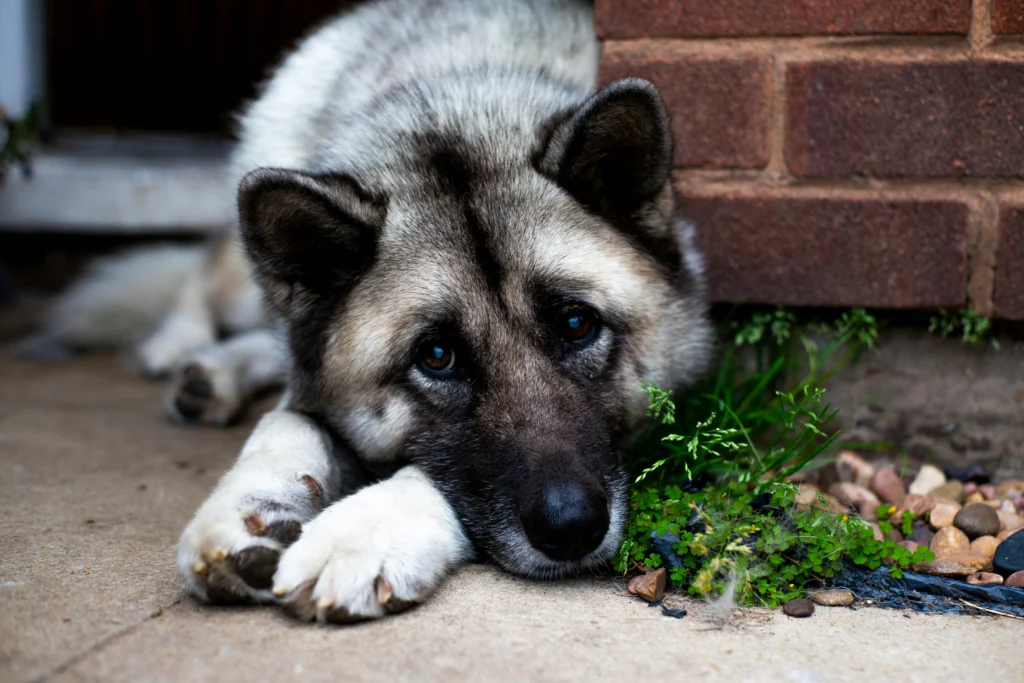
Solution 1: Create an Age-Appropriate Potty Schedule
Addressing senior dog potty training problems starts with recognizing that senior dogs need more frequent bathroom breaks than their younger counterparts. While adult dogs typically require 4-6 bathroom breaks daily, senior dogs often need 6-8 opportunities to eliminate comfortably.
Implementing the Modified Schedule
Morning routine: Take your senior dog out immediately upon waking, as their bladder control tends to weaken overnight. Follow this with breakfast and another potty break within 15-20 minutes.
Midday frequency: Increase bathroom breaks to every 3-4 hours instead of the standard 6-8 hours for adult dogs. This proactive approach prevents accidents and reduces anxiety around these problems.
Evening considerations: Limit water intake 2-3 hours before bedtime, but ensure adequate hydration throughout the day. Take your dog out for a final bathroom break as close to bedtime as possible.
Tracking Success
Use a potty diary to monitor patterns in your dog’s elimination habits. Note successful outdoor trips, indoor accidents, food and water intake, and any behavioral changes. This data helps identify triggers and optimize your approach to managing these problems.
Solution 2: Modify the Physical Environment
Environmental modifications significantly impact the success rate of addressing senior dog potty training problems. Your aging dog’s changing physical capabilities require thoughtful adjustments to their living space.
Indoor Accessibility Improvements
Ramp installations: Replace stairs with gentle ramps to help arthritic dogs reach outdoor areas without pain. The ideal ramp slope should be no steeper than a 1:12 ratio for comfortable navigation.
Non-slip surfaces: Add rubber mats or carpet runners to slippery floors, preventing falls and building confidence in dogs hesitant to move due to senior dog potty training problems related to mobility fears.
Multiple access points: Create several easy routes to outdoor areas, reducing the distance and obstacles your senior dog must navigate during urgent bathroom needs.
Outdoor Environment Optimization
Designated elimination areas: Establish closer bathroom spots for dogs who struggle with longer walks. Choose level ground with good footing to prevent slips and falls.
Weather protection: Provide covered outdoor areas for elimination during harsh weather, as senior dogs are more sensitive to temperature extremes and may avoid going outside, leading to these problems.
Lighting improvements: Install motion-activated lights along pathways and in elimination areas, as senior dogs often develop vision problems that make nighttime navigation challenging.
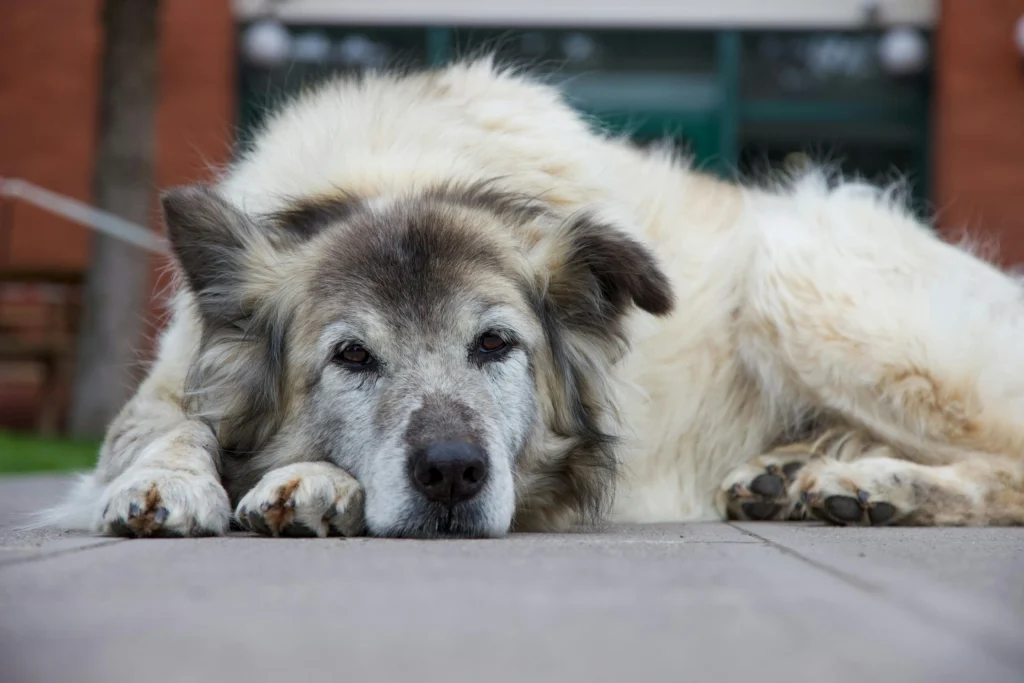
Solution 3: Implement Positive Reinforcement Techniques
Traditional punishment-based training methods are particularly counterproductive when addressing senior dog potty training problems. Senior dogs respond better to patient, positive reinforcement strategies that build confidence rather than creating anxiety.
Reward-Based Strategies
High-value treats: Use exceptional treats reserved specifically for successful outdoor elimination. The reward should be immediate and highly motivating to reinforce the desired behavior despite senior dog potty training problems.
Verbal praise: Combine treats with enthusiastic verbal praise using a consistent phrase like “Good potty!” This creates positive associations with outdoor elimination and helps overcome confusion related to these problems.
Timing precision: Reward successful elimination within 3-5 seconds of completion. This immediate feedback helps senior dogs with cognitive decline understand which specific behavior earned the reward.
Avoiding Common Mistakes
Never punish accidents, as this increases anxiety and worsens senior dog potty training problems. Senior dogs often have limited control over elimination due to physical limitations, making punishment both ineffective and cruel.
Instead of scolding, calmly clean accidents with enzymatic cleaners that eliminate odors. Lingering scents can trigger repeat accidents in the same location, perpetuating senior dog potty training problems.
Solution 4: Address Medical Issues Promptly
Medical conditions cause or contribute to approximately 75% of senior dog potty training problems. Distinguishing between behavioral and medical issues requires professional veterinary assessment and appropriate treatment.
Common Medical Contributors
Urinary tract infections cause frequent, urgent urination that can lead to indoor accidents. These infections are more common in senior dogs and require antibiotic treatment to resolve senior dog potty training problems.
Kidney disease affects waste processing and water regulation, leading to increased urination frequency and volume. Early detection and management can slow progression and reduce these associated problems.
Arthritis and mobility issues make it physically difficult for dogs to assume elimination postures or reach outdoor areas quickly enough. Pain management and mobility aids can significantly improve success rates.
Diagnostic Approaches
Work with your veterinarian to conduct comprehensive health screenings, including blood work, urinalysis, and physical examinations. These tests identify underlying conditions contributing to senior dog potty training problems.
Consider advanced diagnostics like ultrasounds or X-rays if initial tests don’t reveal clear causes for persistent senior dog potty training problems. Some conditions require specialized testing for accurate diagnosis.
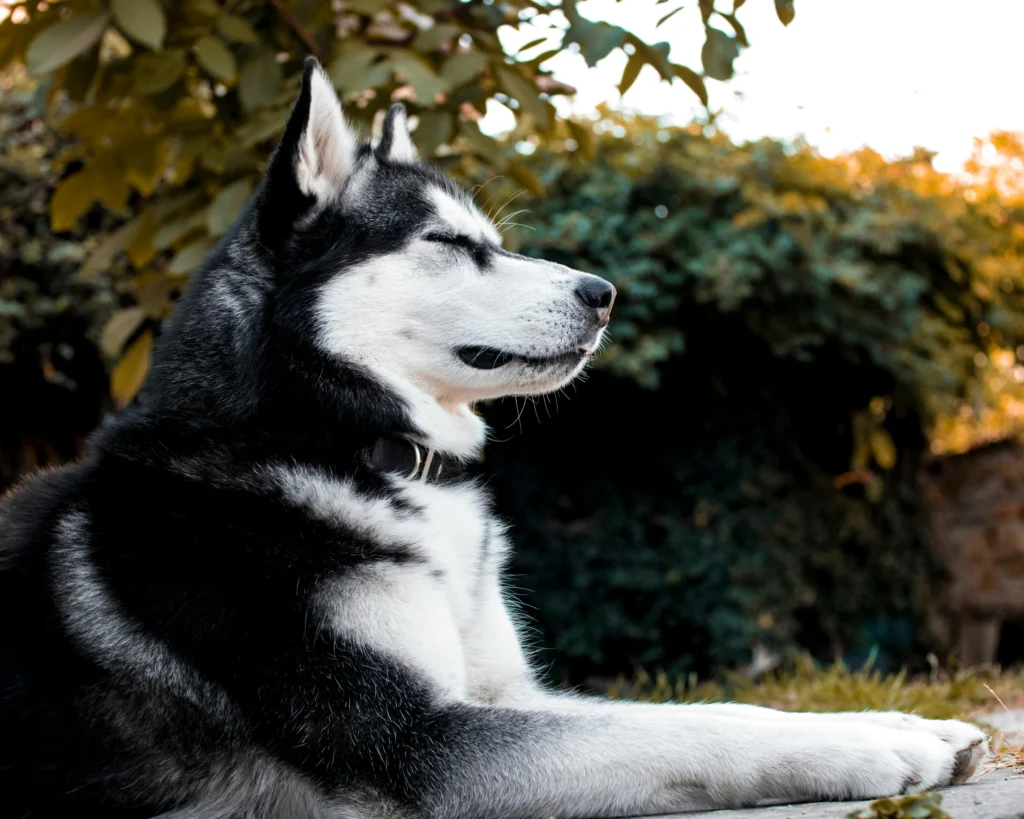
Solution 5: Use Indoor Potty Solutions Strategically
While outdoor elimination remains ideal, strategic indoor potty solutions can provide valuable backup options for managing senior dog potty training problems during emergencies or severe weather.
Choosing Appropriate Indoor Options
Puppy pads: Place washable or disposable pads near doors leading outside. This creates a transitional option for dogs who can’t reach outdoor areas in time, reducing stress around senior dog potty training problems.
Artificial grass patches: These provide a more natural elimination surface that can ease the transition for dogs struggling with senior dog potty training problems due to surface preferences developed over years of outdoor habits.
Litter box alternatives: For smaller senior dogs, modified litter boxes with low sides can provide accessible indoor elimination options when outdoor access is impossible.
Implementation Guidelines
Gradually introduce indoor options rather than replacing outdoor habits entirely. Use indoor solutions as supplements to outdoor elimination, not replacements, to maintain your dog’s preference for outdoor bathroom breaks.
Place indoor potty areas away from food and sleeping areas, as dogs naturally avoid eliminating near these spaces. This strategic placement increases acceptance and reduces resistance to indoor options when addressing these problems.
Solution 6: Manage Cognitive Decline Effects
Cognitive dysfunction syndrome affects 14-35% of dogs over 8 years old, significantly contributing to senior dog potty training problems through confusion, disorientation, and memory loss.
Recognizing Cognitive Symptoms
Disorientation: Dogs may forget familiar routes to outdoor areas or become confused about appropriate elimination locations, directly causing senior dog potty training problems.
Sleep-wake cycle changes: Altered sleeping patterns can disrupt established bathroom routines, leading to accidents during unusual hours and complicating senior dog potty training problems.
Increased anxiety: Cognitive decline often increases general anxiety, which can manifest as inappropriate elimination and worsen existing senior dog potty training problems.
Management Strategies
Routine consistency: Maintain extremely consistent daily schedules to help confused dogs remember bathroom timing. Predictable routines reduce anxiety and improve success rates with senior dog potty training problems.
Environmental enrichment: Provide mental stimulation through puzzle toys, gentle training sessions, and social interaction. Mental exercise can slow cognitive decline and improve overall behavior, including senior dog potty training problems.
Veterinary interventions: Discuss prescription medications and supplements that may slow cognitive decline progression. Some treatments can significantly improve the quality of life and reduce senior dog potty training problems.
Solution 7: Dietary and Hydration Adjustments
Nutrition plays a crucial role in managing senior dog potty training problems. Strategic dietary modifications can improve digestive health, reduce urgency, and support overall urinary tract function.
Optimal Feeding Schedules
Consistent meal timing: Feed senior dogs at the same times daily to create predictable elimination schedules. This regularity helps prevent accidents by allowing you to anticipate bathroom needs and reduce senior dog potty training problems.
Smaller, frequent meals: Divide daily food portions into 3-4 smaller meals instead of 1-2 large meals. This approach improves digestion and creates more predictable elimination timing, helping manage senior dog potty training problems.
Strategic timing: Provide the last meal at least 3-4 hours before bedtime to prevent overnight accidents. This timing allows complete digestion and elimination before sleep, reducing nighttime senior dog potty training problems.
Hydration Management
Balanced water intake: Ensure adequate hydration throughout the day while limiting access 2-3 hours before bedtime. Dehydration worsens kidney function and can actually increase senior dog potty training problems.
Quality water sources: Provide fresh, clean water in easily accessible locations throughout your home. Senior dogs may drink less if water sources are difficult to reach, leading to health issues that worsen senior dog potty training problems.
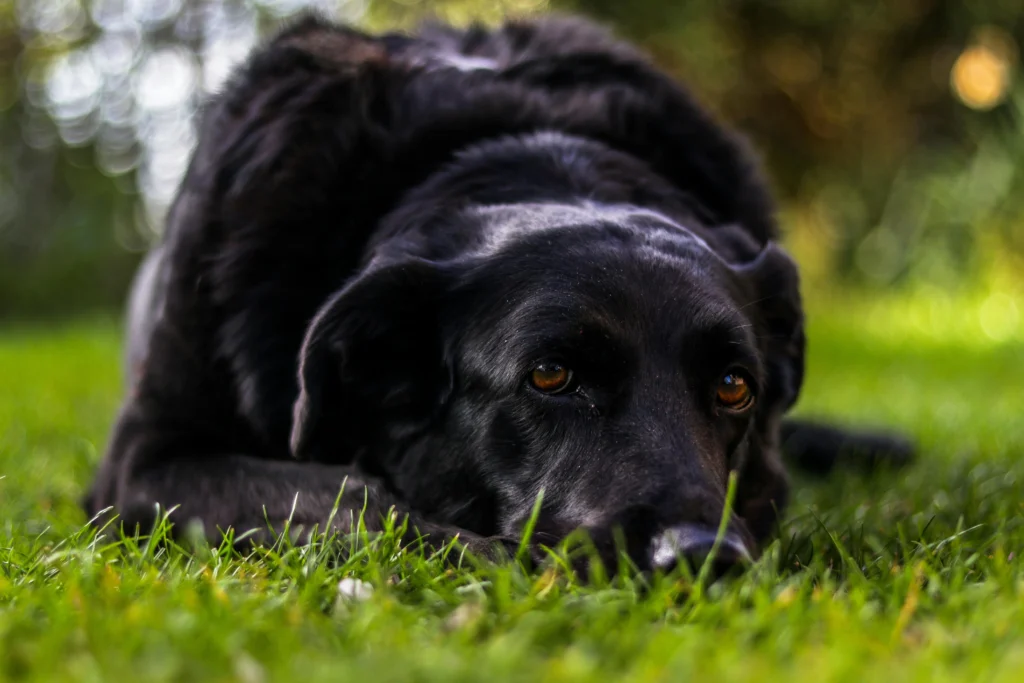
Solution 8: Create Support Systems and Emergency Plans
Successful management of senior dog potty training problems requires comprehensive support systems that address both routine care and emergencies.
Building Your Support Network
Professional resources: Establish relationships with veterinarians, certified dog trainers experienced with senior dogs, and pet sitters who understand senior dog potty training problems. Having experts available prevents small issues from becoming major problems.
Family coordination: Ensure all household members understand and consistently implement your senior dog’s bathroom routine. Inconsistency from different family members can worsen senior dog potty training problems and confuse your aging pet.
Emergency planning: Develop backup plans for situations when your dog cannot reach outdoor areas due to severe weather, illness, or other emergencies. Having alternative elimination options prevents stress and maintains progress with senior dog potty training problems.
Long-term Management
Regular monitoring: Schedule frequent veterinary checkups to catch medical issues early. Many conditions that contribute to senior dog potty training problems are more manageable when detected and treated promptly.
Adaptive strategies: Be prepared to modify your approach as your dog’s needs change with advancing age. What works today may need adjustment in six months as senior dog potty training problems evolve with your dog’s condition.
Quality of life assessments: Regularly evaluate whether your current strategies effectively maintain your dog’s dignity and comfort while managing senior dog potty training problems. The goal is always your pet’s well-being and happiness.
Conclusion
Managing senior dog potty training problems requires patience, understanding, and a multifaceted approach that addresses the unique challenges of aging dogs. By implementing these eight evidence-based solutions, creating appropriate schedules, modifying environments, using positive reinforcement, addressing medical issues, incorporating indoor options, managing cognitive decline, adjusting diet and hydration, and building support systems, you can significantly improve your senior dog’s bathroom habits and quality of life.
Remember that senior dog potty training problems are often symptoms of underlying age-related changes rather than behavioral defiance. Your aging companion needs compassion, consistency, and appropriate medical care to navigate this challenging phase of life successfully.
Success with senior dog potty training problems doesn’t happen overnight, but with dedication and the right strategies, most senior dogs can maintain appropriate bathroom habits well into their golden years. Focus on small improvements, celebrate successes, and adjust your approach as needed to support your beloved pet through this journey.
Frequently Asked Questions
How long does it typically take to see improvement in senior dog potty training problems?
Most pet owners notice some improvement in senior dog potty training problems within 2-4 weeks of implementing consistent strategies. However, significant improvement often takes 6-8 weeks, especially when medical issues are involved. The timeline varies based on your dog’s specific health conditions, cognitive function, and the severity of existing senior dog potty training problems.
Should I use puppy pads for my senior dog’s potty training problems?
Puppy pads can be helpful tools for managing senior dog potty training problems, but they should supplement rather than replace outdoor elimination when possible. Use pads strategically near exits or during emergencies, but continue encouraging outdoor bathroom breaks to maintain your dog’s natural preferences and prevent over-reliance on indoor options.
When should I consult a veterinarian about senior dog potty training problems?
Consult your veterinarian immediately if your senior dog’s potty training problems appear suddenly or worsen rapidly. Also seek professional help if accidents increase in frequency, your dog shows signs of pain during elimination, or if you notice blood in urine or stool. Any significant change in bathroom habits warrants veterinary evaluation to rule out medical causes.
Can medications help with senior dog potty training problems?
Yes, various medications can address the underlying causes of senior dog potty training problems. Antibiotics treat urinary tract infections, anti-inflammatory drugs help with arthritis pain, and some medications support cognitive function. Additionally, prescription diets and supplements may improve overall urinary tract health and reduce elimination issues.
How do I clean accidents from senior dog potty training problems effectively?
Use enzymatic cleaners specifically designed for pet accidents, as these break down odor-causing compounds completely. Avoid ammonia-based cleaners, which smell similar to urine and may encourage repeat accidents. Thoroughly clean and dry the area, then consider using a black light to detect any remaining traces that might trigger future senior dog potty training problems.
Are some dog breeds more prone to senior dog potty training problems?
While senior dog potty training problems can affect any breed, larger breeds may develop arthritis and mobility issues earlier, impacting bathroom habits. Breeds prone to cognitive dysfunction, kidney disease, or urinary issues may experience more severe senior dog potty training problems. However, individual health status matters more than breed when predicting and managing these issues.
How often should senior dogs go outside for potty breaks?
Senior dogs typically need bathroom breaks every 3-4 hours during the day, compared to 6-8 hours for younger adult dogs. Many seniors require 6-8 potty breaks daily, including immediately after waking, after meals, and before bedtime. Adjust frequency based on your dog’s specific needs and any senior dog potty training problems you’re experiencing.
What’s the difference between medical and behavioral senior dog potty training problems?
Medical senior dog potty training problems involve physical conditions like urinary tract infections, kidney disease, or arthritis that make normal elimination difficult or impossible. Behavioral issues stem from cognitive decline, anxiety, or environmental changes. Many cases involve both factors, which is why a comprehensive veterinary evaluation is crucial for developing effective treatment plans.

